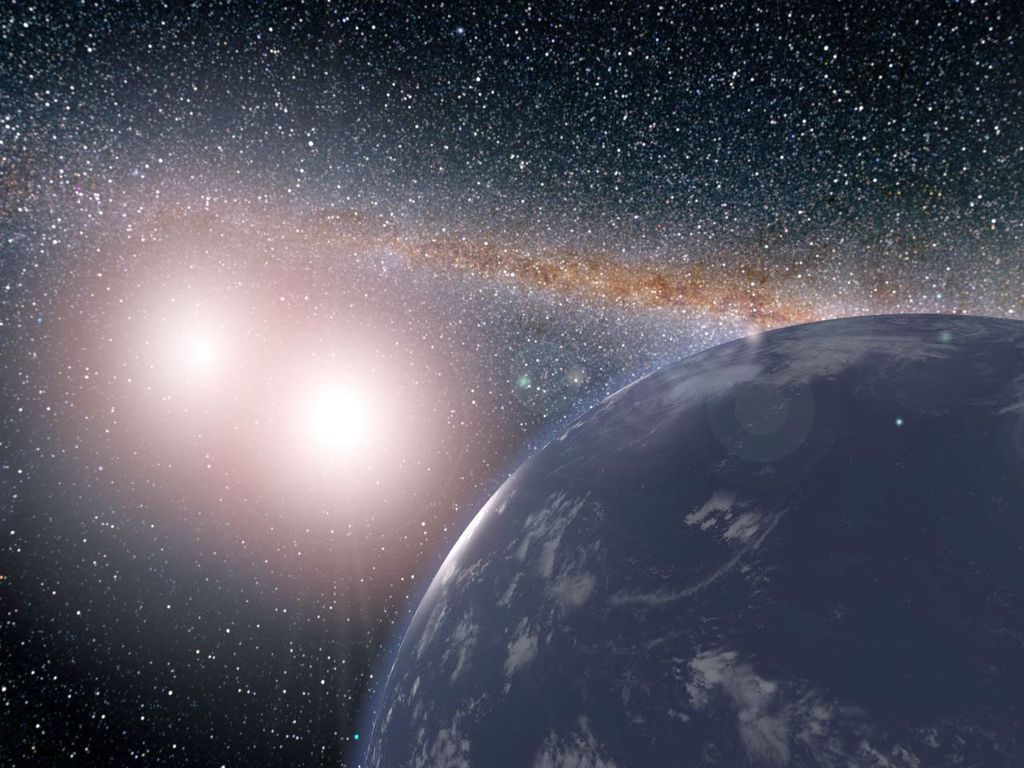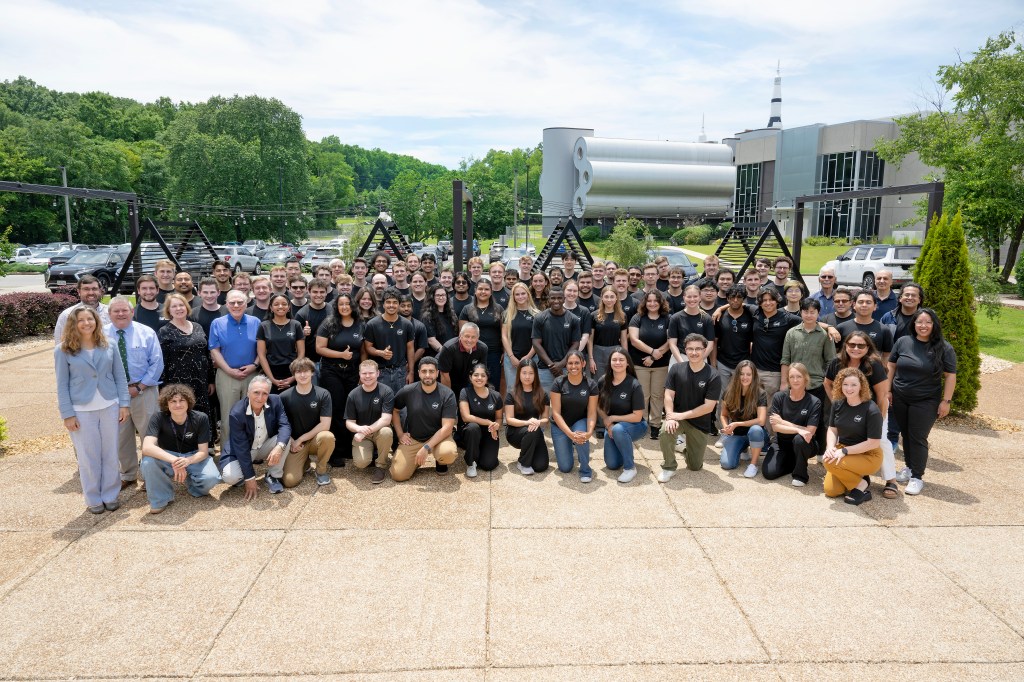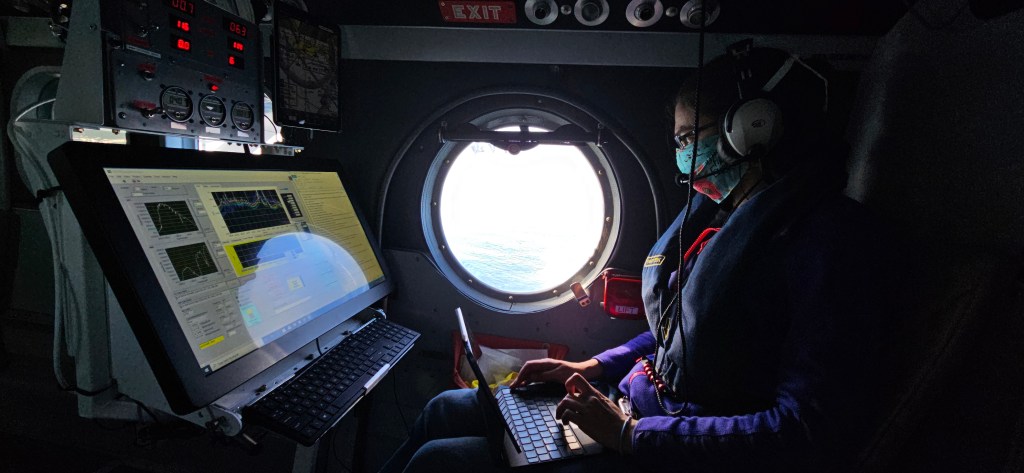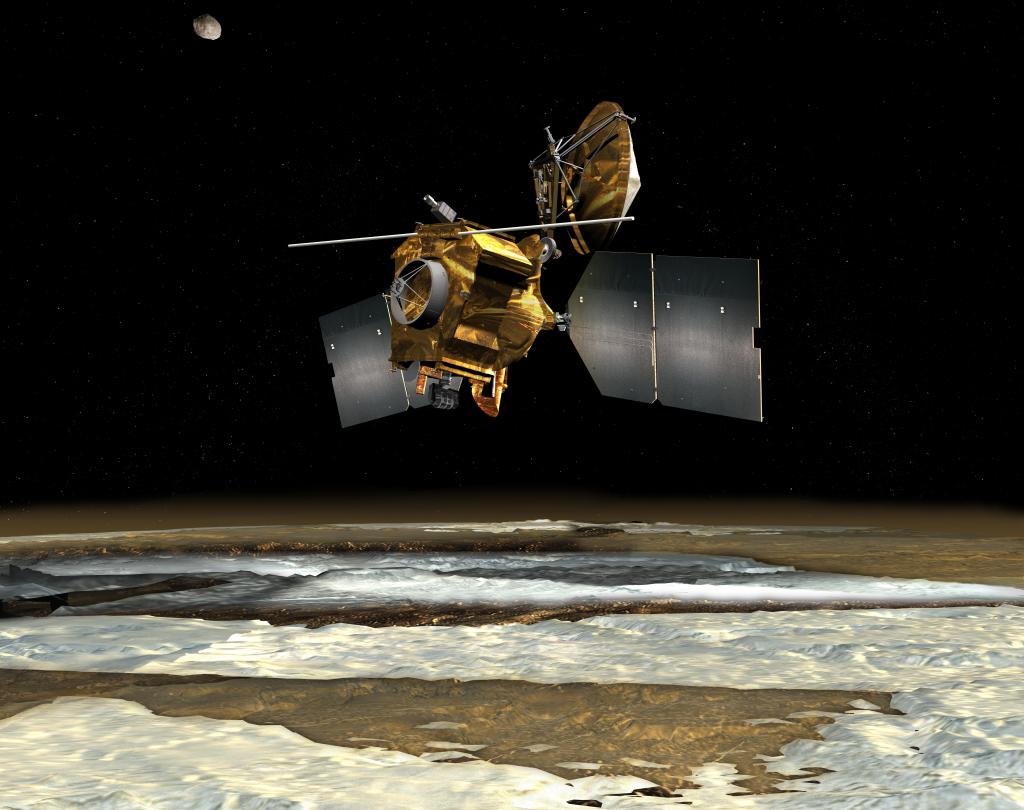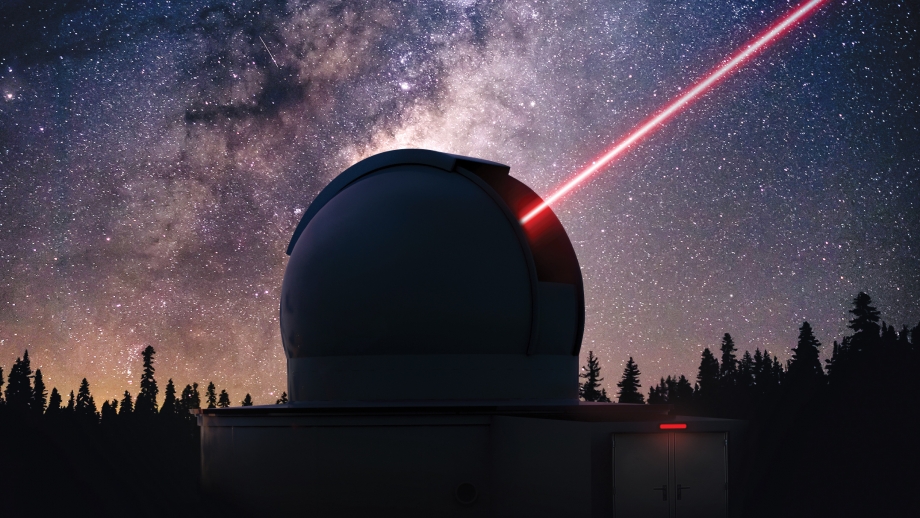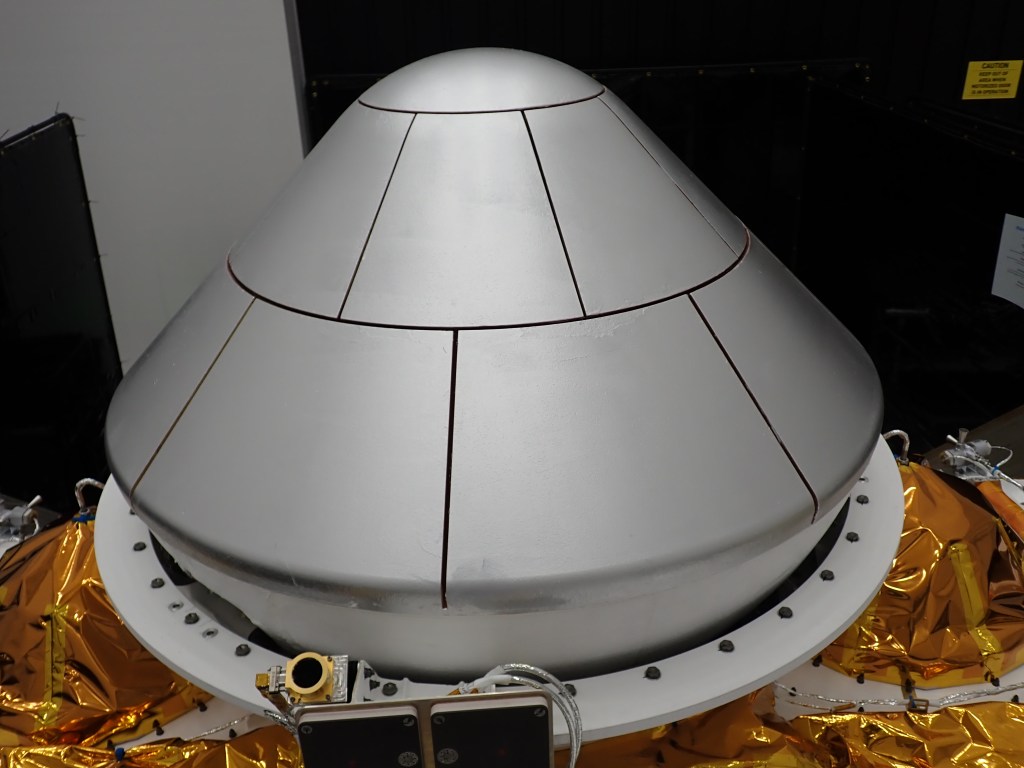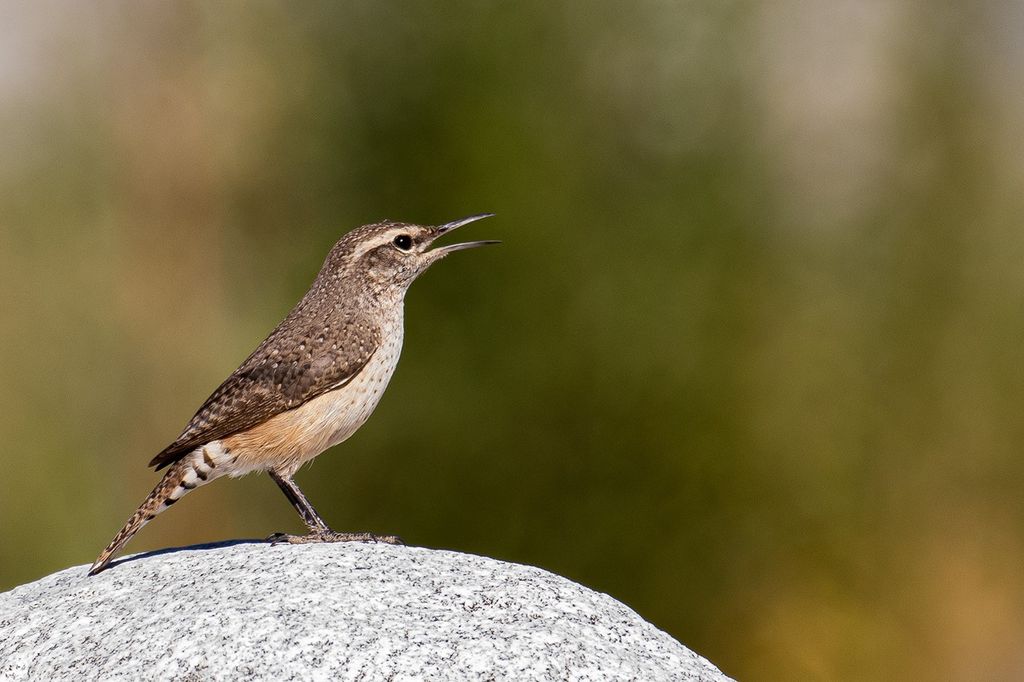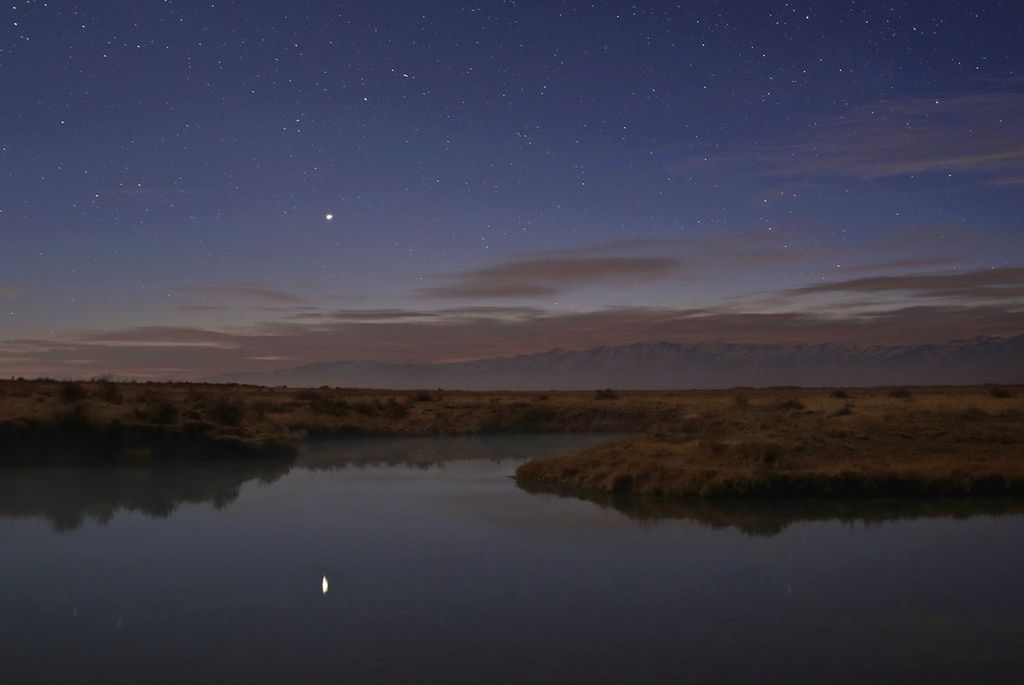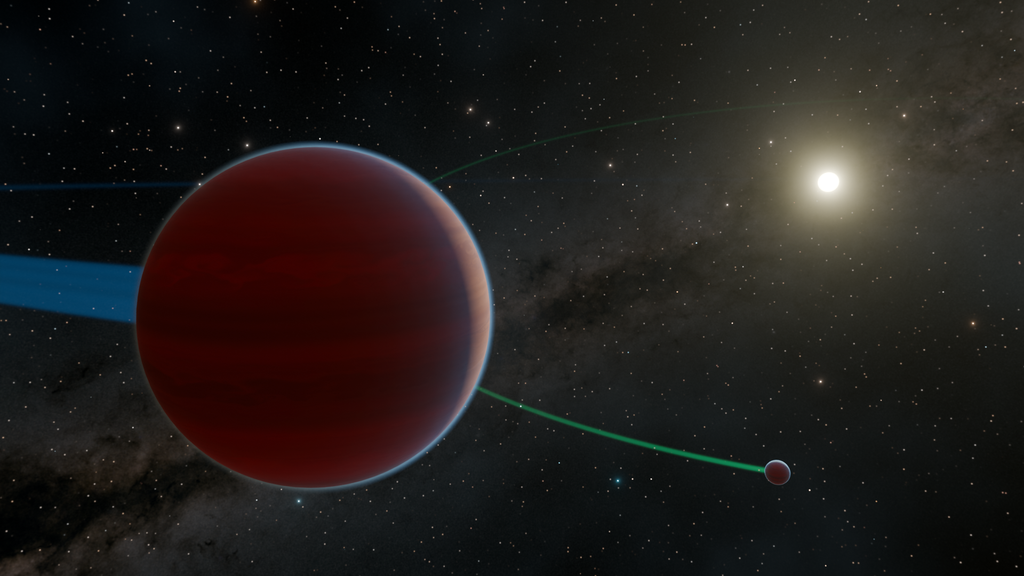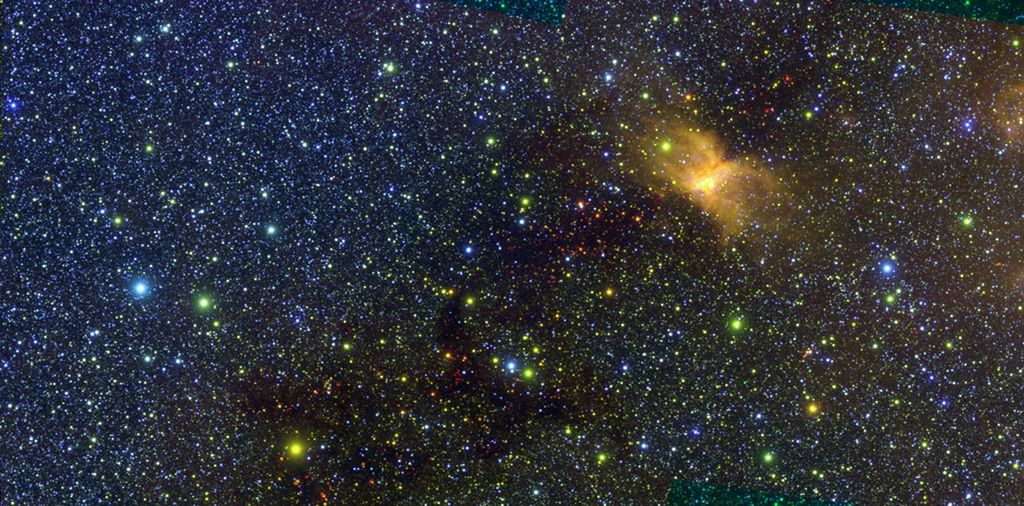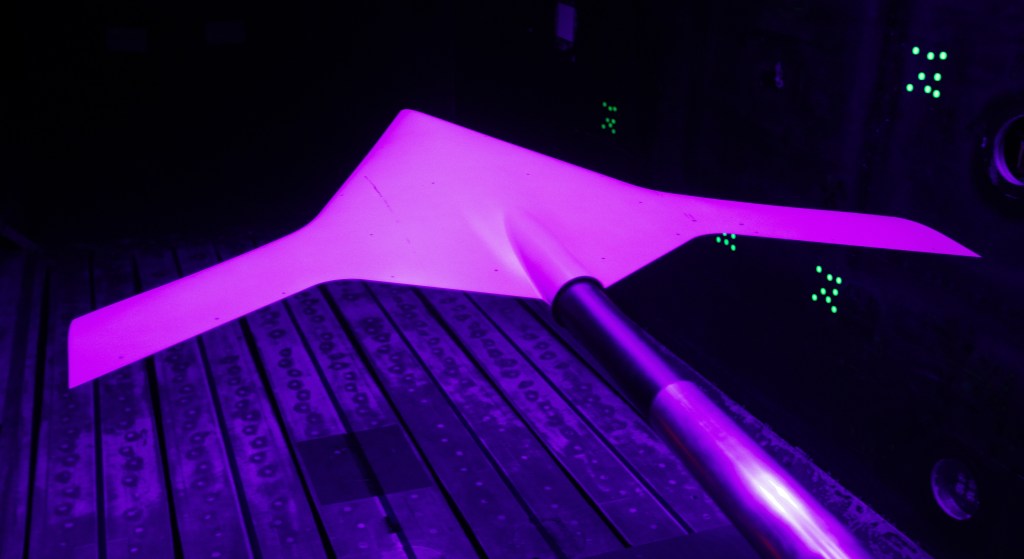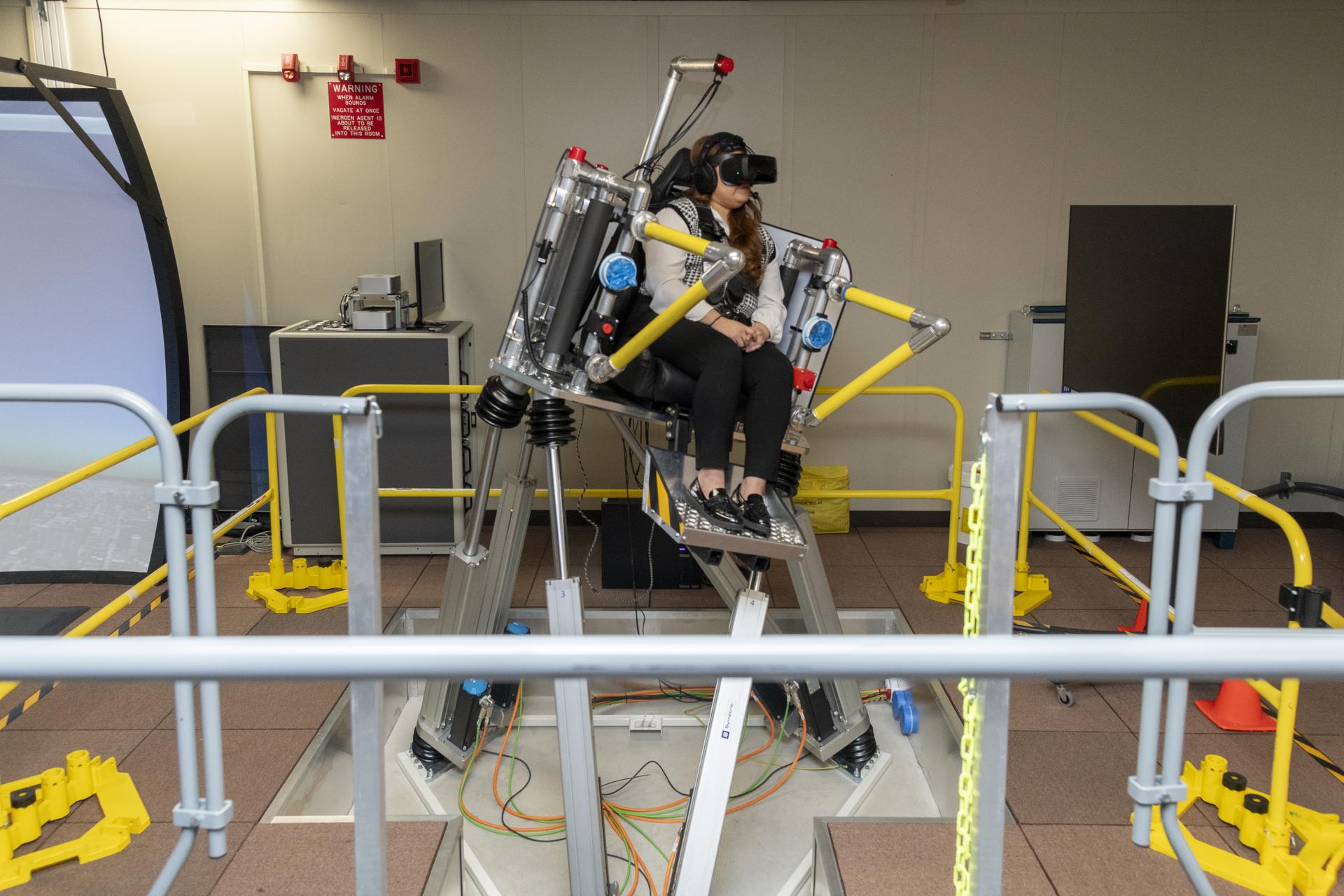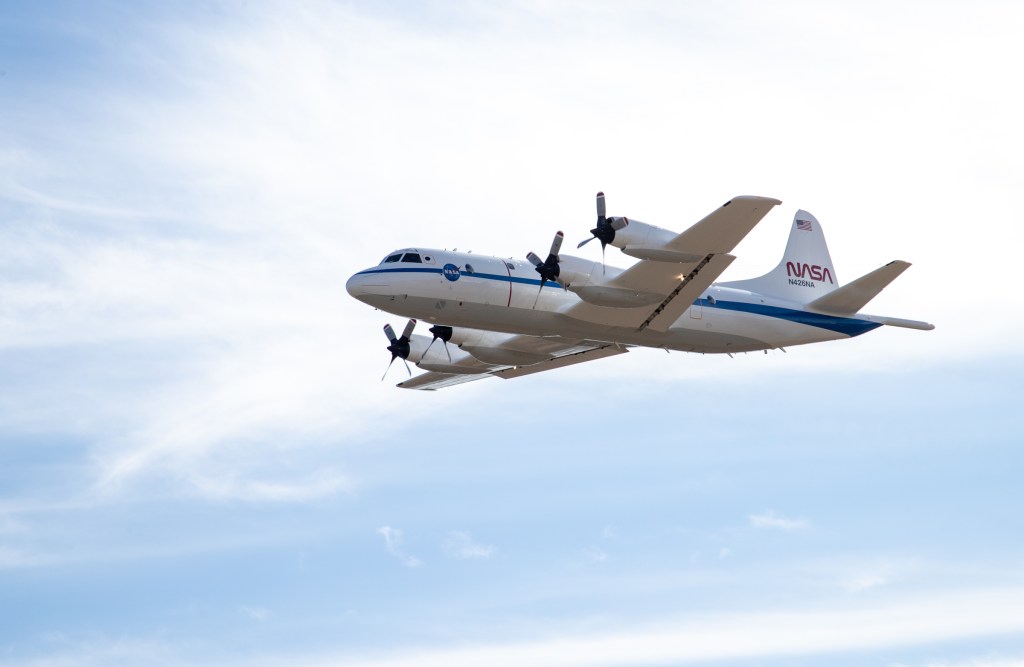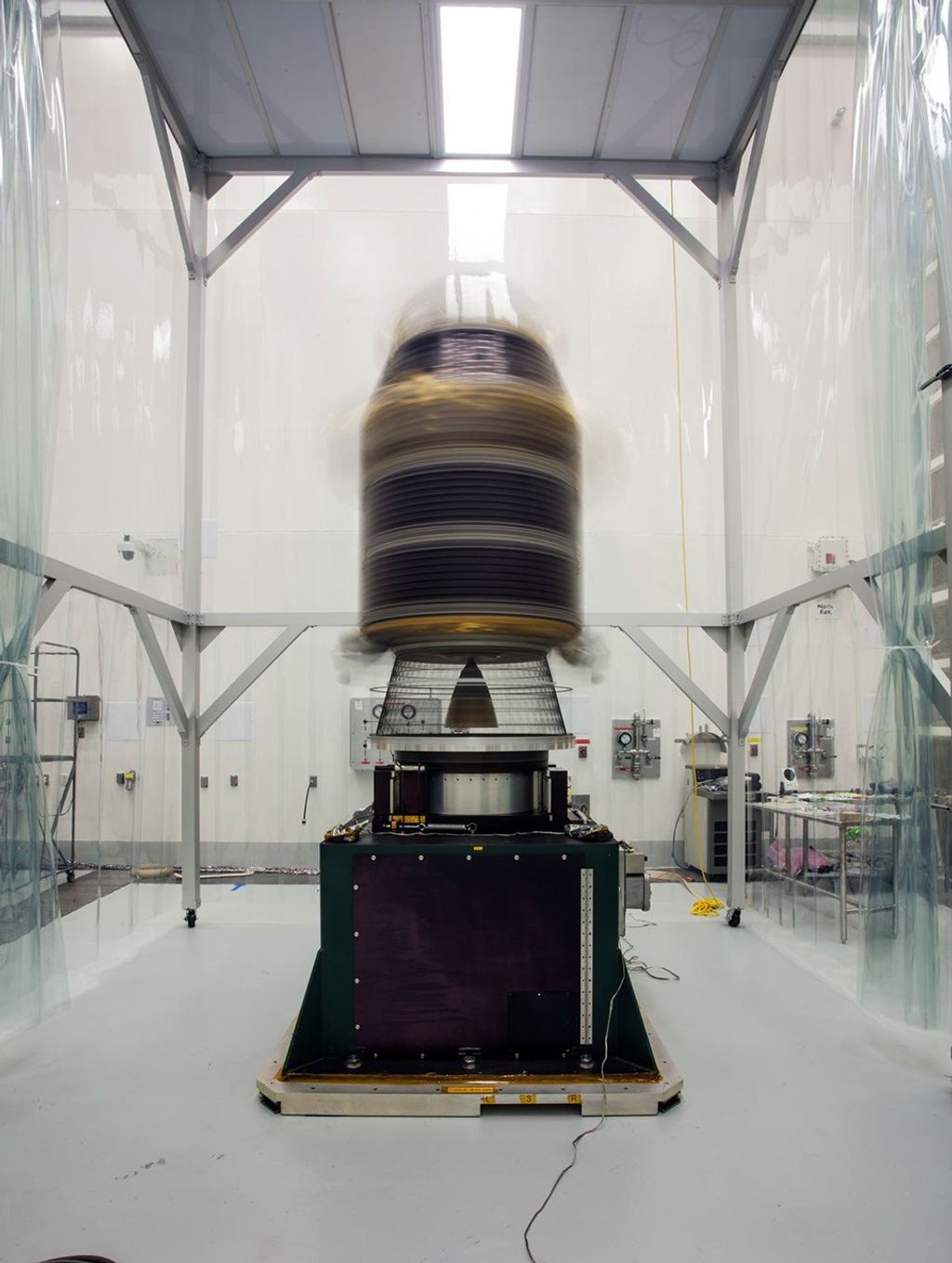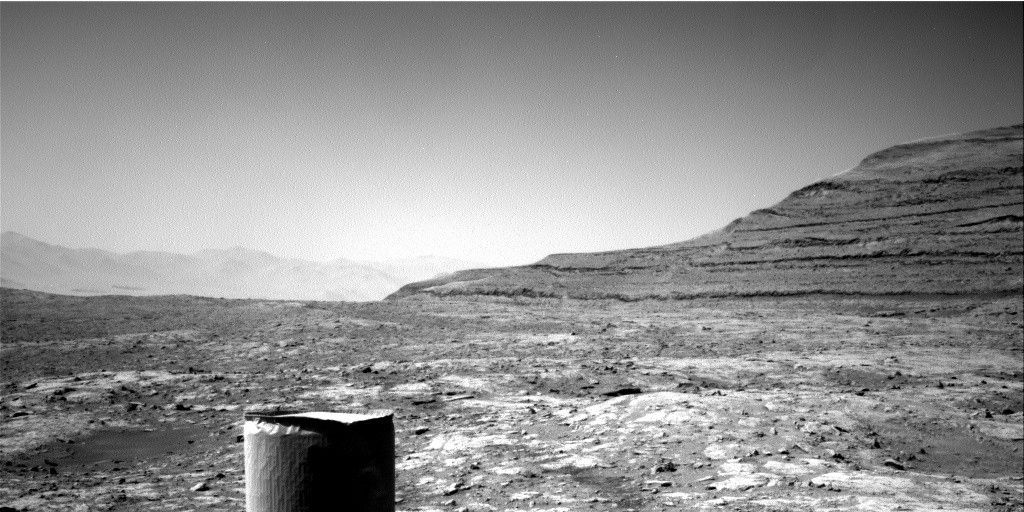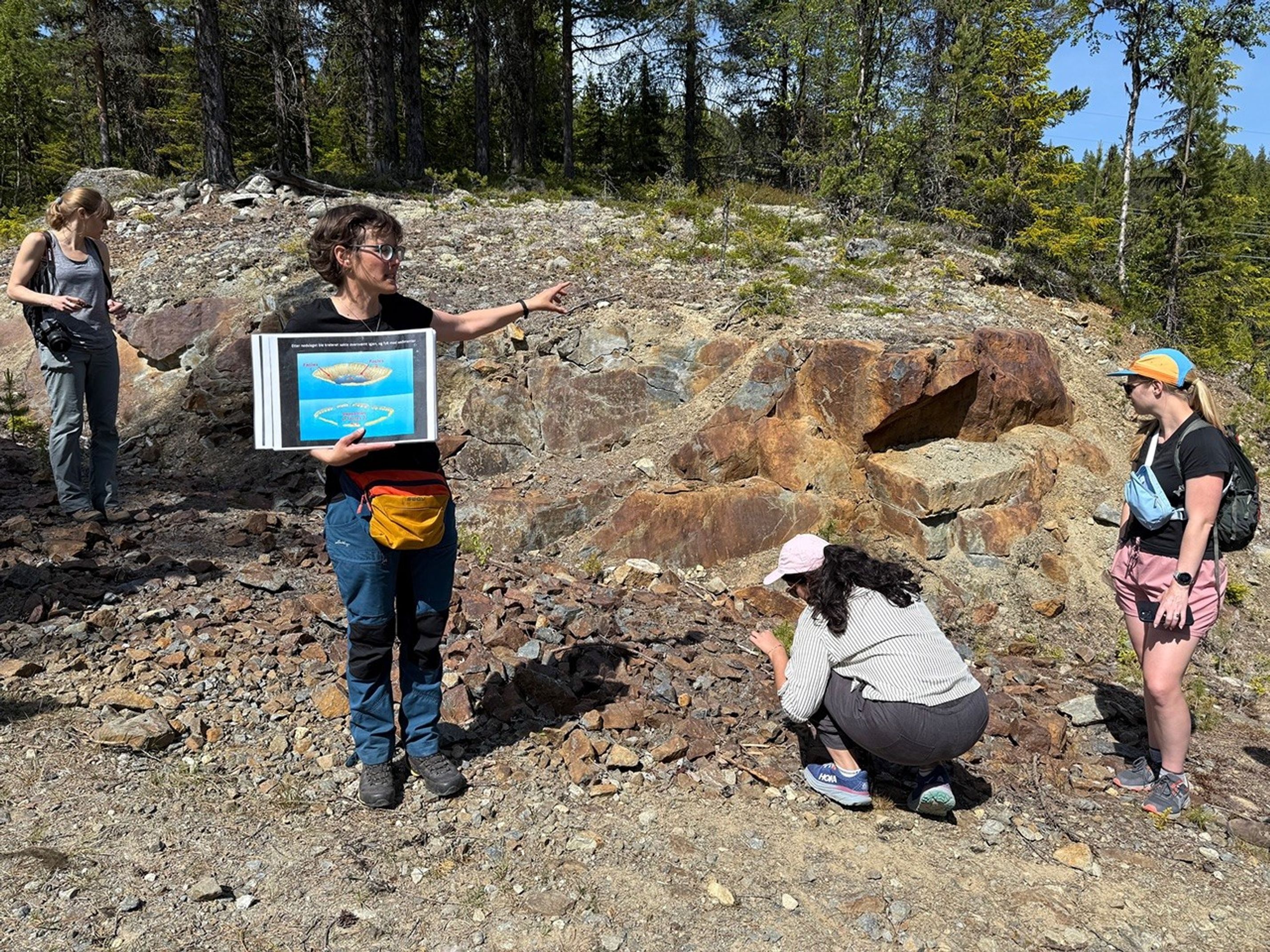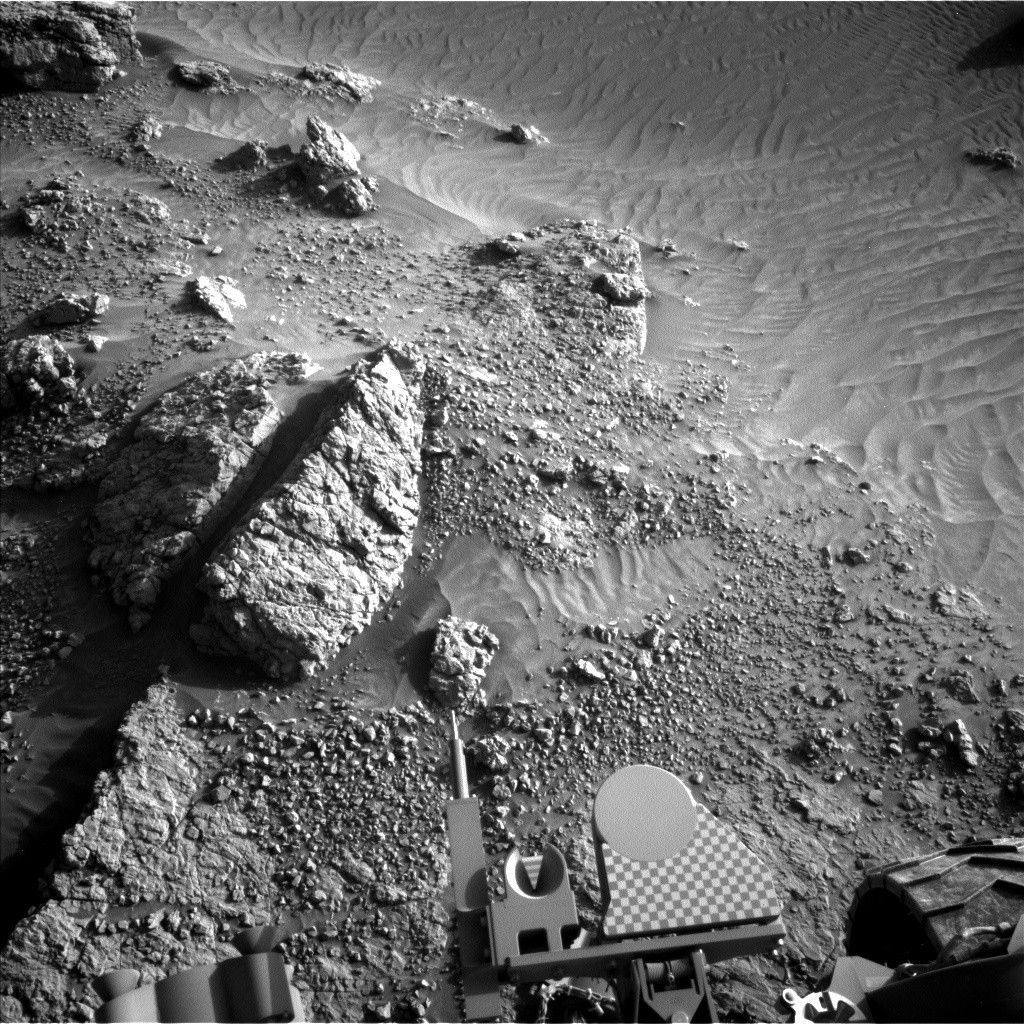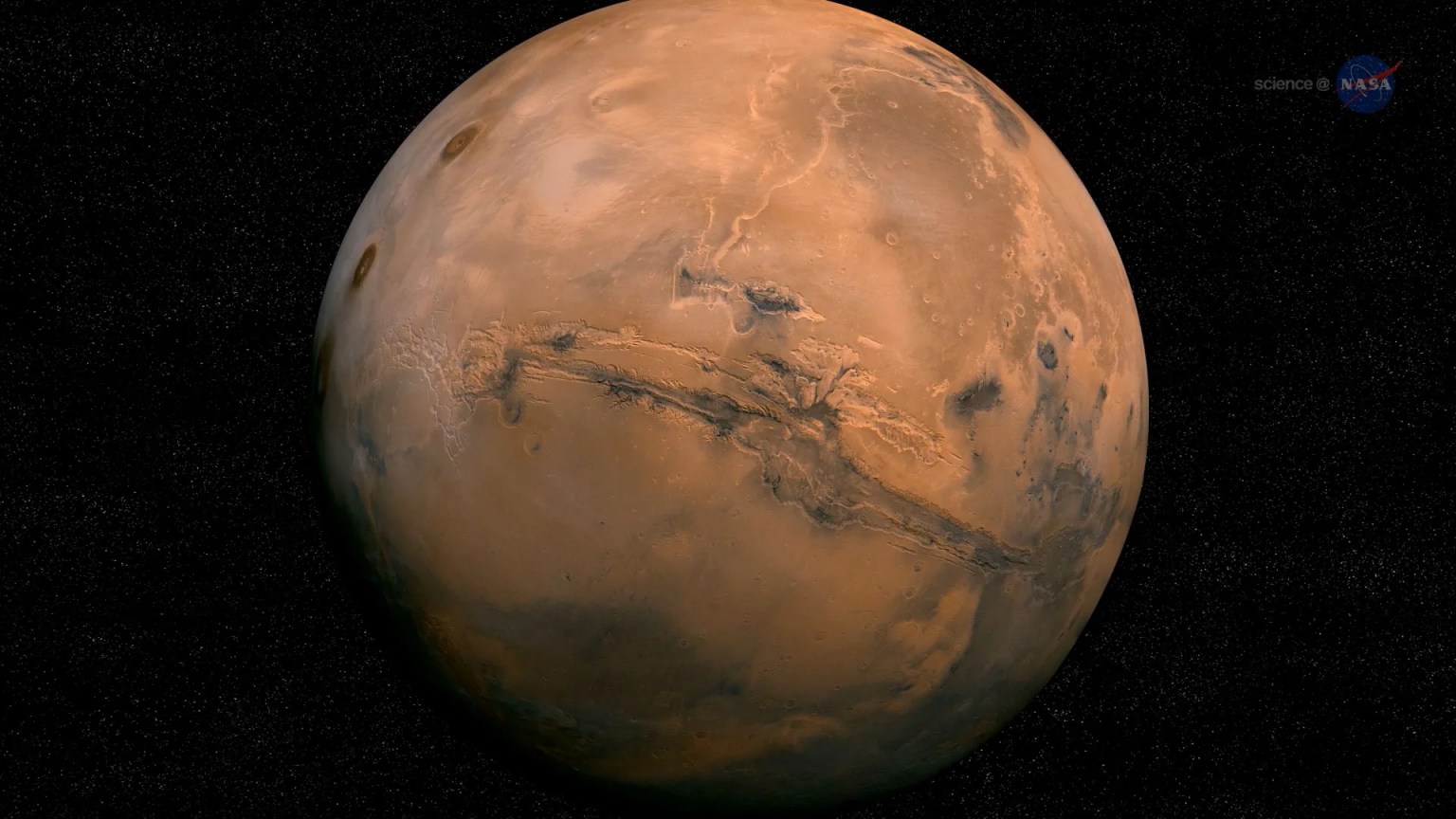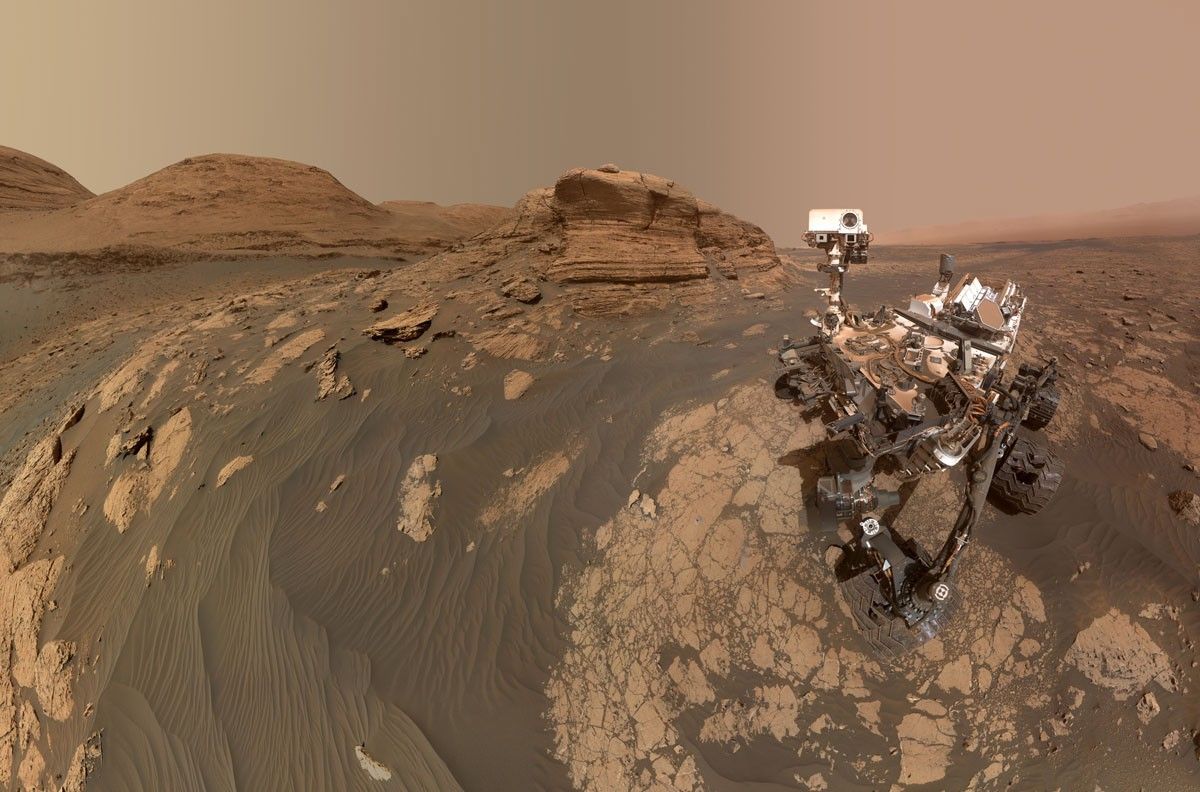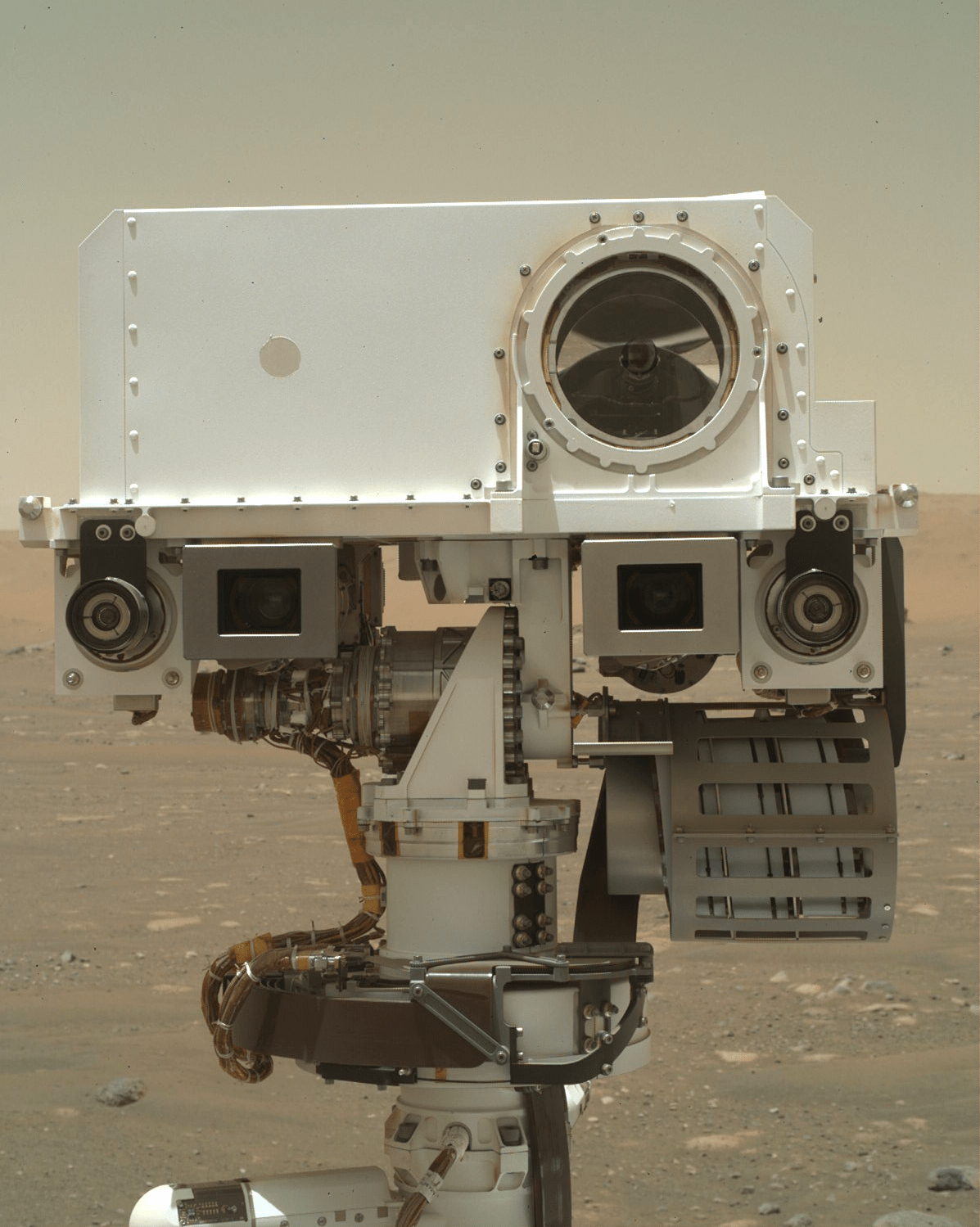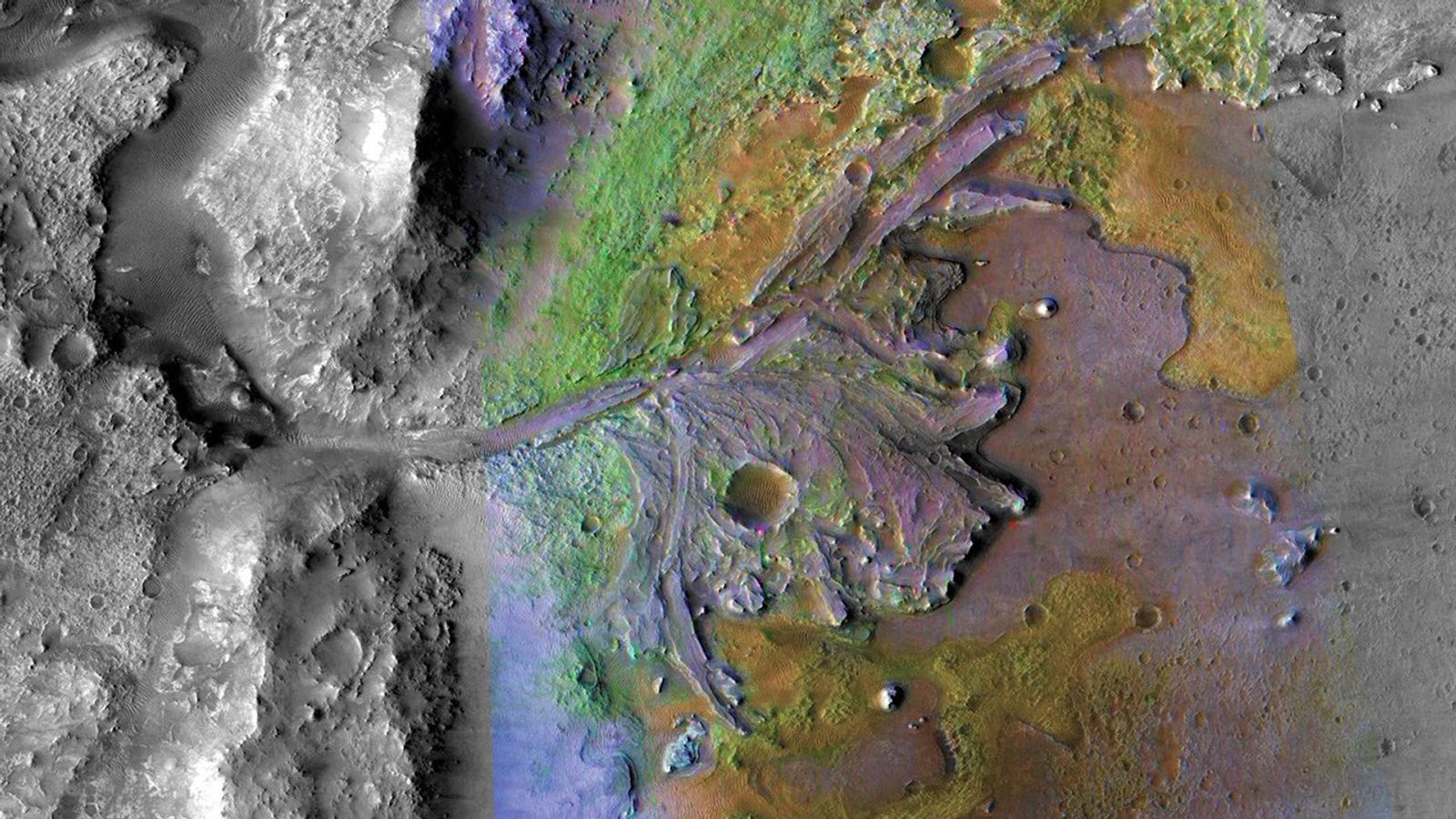After yesterday's soliday for the rover operations team on Earth, we went back to work planning activities for Curiosity to complete on sol 2435 in the Glen Torridon area.
Image taken by Curiosity's front hazard camera, on Sol 2434, Earth time 2019-06-12 at 04:21:30 UTC. It shows the ridge in front of the rover in sol 2435 planning.
After yesterday's soliday for the rover operations team on Earth, we went back to work planning activities for Curiosity to complete on sol 2435 in the Glen Torridon area. One feature standing high above the ground in this area are ridges, displaying a mixture of pebbles and sand. Their surface appears to be compacted enough to drive over, but finding a target suitable for our chemistry investigations is a challenge - unless we want soil, of course. It is nevertheless important to understand the chemistry of the pebbles since they do originate from a rock that makes up the stratigraphy of the Gale sediment column. Thus, understanding their composition is as important as understanding outcrops and bigger float rocks.
The team planned a series of investigations of the pebbles and the soil in between. We are also looking into the distance, but more about that later. The investigations at the current parking location are two ChemCam investigations. The target "Little Minch" is a pebble of about 2 to 3 cm size. The ChemCam team managed to fit a five-spot raster on it. Next to the pebble, a second ChemCam investigation targets the soil, with a target name "Strathspey." Mastcam looks at the same area with a multispectral investigation, which will allow us to compare the spectral information with the chemical information, but also to look at undisturbed soil and soil just disturbed by ChemCam in the same frame.
Looking into the distance, Mastcam investigates the ridge acquiring two mosaics, which will allow us to assess pebble size and distribution as well as the relationship to the outcrop at the top of the ridge. The target name for this investigation is "Marwick Head." Even further in the distance is the sulfate-bearing unit. This is a unit that was detected before landing and shows hydrous sulfates in orbital images. ChemCam takes an image of this unit from Curiosity's current parking spot, which will reveal further details of the rock structures in that area. Another look forward is, of course, in the direction of the next drive, which should take Curiosity down off the ridge and into the trough between the ridges. Downwards and onwards, but don't forget to look back occasionally.
Written by Susanne Schwenzer, Planetary Geologist at The Open University

